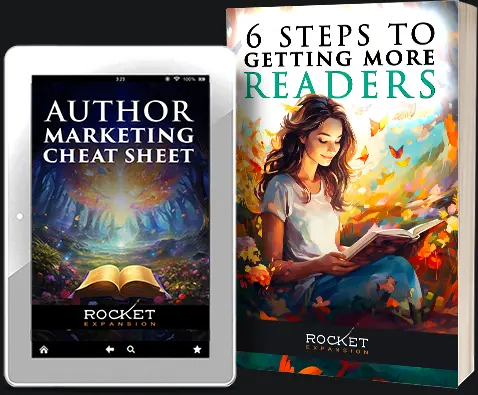To Self-Publish Or To Get Published? Let’s Answer That Question

You’re ready to publish. Now you have a big question to answer:
“How exactly should you publish?”
You’ve probably heard of two major options: traditional publishing vs self-publishing.
Let’s look at the advantages and disadvantages of each so that you can decide for yourself.
The Difference Between Self-Publishing and Traditional
As a self-published author, since you publish the book yourself, you own the rights and fully control the profits you make on book sales.
That also means you’re responsible for absolutely everything from writing to editing to publishing to sale. It doesn’t mean you have to do everything, but you will have to make sure it gets done if you want any level of success!
Traditional publishing is just as it sounds. The established, traditional model…
You, the author, send your manuscript to an agent. Your agent sends it to a publisher, who then publishes and sells it if you’re extremely lucky and talented.
With a traditionally published book, the publishing house owns the rights and royalties to the book. The publisher is then responsible for the editing, design, marketing, and distribution of your book.
Traditional publishing means more support but less control.
Self-publishing means more independence, zero support (unless you pay for it), and full control.
Traditional publishing is the old-school classical orchestra steeped in rules and tradition. It’s slow. It’s corporate. It’s connected. It has considerable influence.
Self-publishing is the new school rockstar. Sometimes loved, sometimes hated but never ignored. It’s fast. It’s entrepreneurial. It’s disruptive.
They both have pros and cons which we’ll get to soon.
So how did self-publishing become a workable option for authors in the first place?
The Rise Of “Indie” Authors
Until recently, publishing made much more financial sense to do in bulk. Even a small print run of 10K books was simply too much upfront cost for most independent authors. This made it difficult for smaller publishers to print, market, and sell their books with any level of success.
But that all changed with the technological boom of the internet-driven world.
Thanks to ebooks, internet marketing, and print-on-demand publishing, self-publishing has become a workable option for authors who prefer to go it alone.
To fill the demand for independent book-related services, the number of self-publishing support providers has also exploded.
Self-published authors can now get editing, book cover artwork, author websites, and more, just as professionally (some would argue more professionally) than if they went to a big publisher.
Now that you understand how we got here, let’s get down to the nitty-gritty.
Real World Realities Of Traditional Publishing VS Self Publishing
Yes, we’re going to bring up some dirty words here.
We’re going to talk about: time and money.
Traditionally Published: How You Get Paid
It can be hard to get an offer to publish through a bigger publishing house, let alone a good offer that doesn’t sell you or your work short.
But, it can happen and when it does it can be huge in terms of exposure and earnings.
Legendary examples of rejection by publishers come to mind. Even billionaire author, J. K. Rowling’s Harry Potter Books was rejected 12 times before finally being published by Bloomsbury.
If you are able to get that publishing deal, it’ll mean an upfront payment before being published. Which is great, as you don’t have to come up with publishing costs.
This upfront payment is known as an advance on royalties. The publisher pays you the royalties for selling a certain number of books in advance. If more than that number are sold, you’ll continue earning new royalties from there.
In terms of the average advance, an author would be looking at, it varies from one publisher to the next, but also depends on the book format.
In fact, It can be “misleading and unhelpful” to state an ‘average’ advance. Advances vary wildly as they depend on who the publisher is, the type of book you wrote, and the size of your author platform.
A typical advance per book could be between $5 000 and $15 000, however, it could be smaller or larger than these figures depending, and usually no more than $10 000 for first-time authors. As for an author who is publishing a second or third book, the advance can change depending on experience, genre and, of course, how well the previous sales have done.
For authors who already have a larger following and a proven record of success, the advance you can receive can be much greater of course.
The easiest way to understand this is to look at it through the publisher’s eyes.
A publisher is a business. They invest in books they know will make money and grow their business.
If they know you’ll sell a lot of books, they’ll happily pay you more upfront because they know they’ll easily make that investment back and more.
Getting Paid As A Self-Published Author
Since it’s your business, as a self-published author, you’ll pay yourself from any profits you make.
Keep in mind, like with any business, you’re going to need to invest in your business to get it going. Professional editing, book cover art, marketing subscriptions, and a professional author website all have costs.
You will need to decide what budget to invest, to begin with. Pricing varies but you generally get what you pay for. So it’s worth giving your self-publishing business a good head start by getting professional editing and cover design at the very least.
You’ll need to design your book’s interior as well. There are platforms that can help you do this yourself, or you can get a book designer to help you with this step. Make sure to get this done both for your ebook formats and any hard or soft cover formats you’ll be publishing.
With services like Ingram Spark’s Print on Demand, you can print books as they’re ordered. This means you don’t have to do a big print run and sit with thousands of books if they don’t sell.
Once your book is out there in the world and you start getting sales, you’ll make all the profits.
But you’ll also have to make sure people are actually paying attention to your book, finding it online (or wherever you’re selling it), and actually buying it. Yes, I’m talking about marketing, which will be another expense of course.
Earnings: Self-Published VS Traditional
Ok, so all keeping all this in mind, here’s a typical example of how earnings might look for 6000 books sold at $14,99 per book:
| Traditional Authors Earnings | Self-published Authors Earnings | |
|---|---|---|
| Book retail price | $14.99 | $14.99 |
| Initial Royalty Rate | 10% | 60% |
| Income per book | $1.79 | $5.74 |
| Books sold | 6000 | 6000 |
| Earnings in total | $10,740 | $34,440 |
As you can see above, a self-published author would make a lot more profit from books sold. However, this doesn’t take into account the extra expenses they’ll have that a traditionally published author won’t.
As mentioned earlier, an advance means your publisher invests money into publishing your book. So you don’t actually start earning properly until this advance is covered by book sales.
If you’d already received a $10K advance, you’ll only make an extra $740 at this stage
With our self-published author example, to get to this revenue you may have spent $10K or more on various publishing, editing, design, and marketing services. Unless you’re already some kind of design and marketing whiz, you’ll find it hard to get to these numbers in the first place without professional help.
Traditional Publishing Royalties by Book Format
The average percentage of royalties that you can expect to make as a traditionally published author depends on the format of your book. Here’s what you can expect:
- Hardcover sales – 15%
- Trade paperback sales – 7.5%
- Mass-market paperback sales – 5%
- eBook sales – 25%
- Audiobook sales – 25%
Source: scribemedia.com
Some publishers offer ‘graduated royalties’. You may start with a percentage of 10% for the first, say, 5000 hard copies sold, and then increase to 12% for the next 5000 copies and then, say, 15% on every copy after that. This will obviously depend on the lifetime of a book, and what the sales projection looks like.
Keep in mind that everything we’ve covered is about earnings per book. You may publish several books a year and each book will have its own earnings of course.
Time: Traditional Publishing Takes Much Longer
With traditional publishing, the commitment of time is a huge factor.
You can easily be looking at the process being anything from around 1 to 3 years to just get started. So for argument’s sake, let’s give an average of 2 years, around 18-24 months.
How could it possibly take this long:
- It takes around 1 to 3 months to go from an idea to getting a book proposal to an agent.
- Getting it from your agent to an editor, and then getting a book contract offer can take between 2 to 5 months.
- From the contract offer to the time you get your first paycheck can be 2 to 3 months.
- The delivery of the manuscript to the editor takes another 3 to 9 months, if not longer.
- The editor can then work on it for around 2 to 5 months.
- Finally getting it to publication can be another 9 to 12 months.
So, from start to finish, it’s around 2 years in this case.
The above is just an estimate of course. It won’t play out exactly like this in every case. The thing to keep in mind is that you’re going to have to wait many months (possibly years) before your book is released.
But, this route can bring networking, press and backing that comes with being associated with a bigger publishing house. So if you’re after the professionalism and representation of an established publisher, and you’ve got time, traditionally publishing may well be the way to go.
How Much Quicker Is Self-Publishing Then?
Self-published authors hold a lot more freedom over their work, where it goes, and how it gets there. They also have the ability to release more books more frequently, as opposed to being limited by a timeline of waiting years to get a single book out there.
How long does it take to write a book?
An estimate is around 6 months, or 180 days, as an average time. This could obviously be longer for first-time authors, or even much shorter. Many of our author clients write and publish a new book every month or two, for example.
Now we need to take into consideration time for editing and book design, which could be a month or two depending on how it’s done.
With the route of self-publishing, it is really up to you in terms of how long this part will take. It can be a matter of weeks to a few months to get your work out there, but nothing close to the 2-3 year mark of traditional publishing.
Success at self-publishing comes at a price. Everything you do as a self-published author to make your book more attractive, more readable, and a better overall quality product will help your sales in the long run.
If you try to sacrifice time for quality you may be wasting time in the long run.
When going this route, every aspect of your work has to be at its best, or else you raise the failure rate of your book. This includes the writing itself, the editing, the book cover, the way you market the book, and how you get it out there. Make sure each step is planned, checked, and then double-checked, being executed perfectly down to the finest details.
When it comes to your work, your cover is as important as the book itself.
This may sound like a bold statement, but if someone doesn’t click on or pick up your book to consider if they want to buy it, you stand zero chance of selling it. That all starts with a great cover.
Great cover design, of course, will also take time.
The Downside To Self Publishing
It’s all on you, from finances to the smallest details, you do it all. Self-publishing means self-marketing, which entails a whole strategy in itself.
You also have no support or backing from an agent and publishing house.
On the one hand, you don’t have anyone gatekeeping the industry and you don’t need to report to anyone before making changes. But, this also means that you don’t have someone there to guide you through the process, check everything, and do things step by step.
So keep this in mind when opting to go the self-publishing route.
Is Self Publishing Worth It?
In short, most definitely. You’re able to have more control over a lot more, which is always a win.
Your timeline will be much shorter. As soon as you are ready, you can get started.
Another perk is not having to wait for the approval or ‘backing’ of an agent through representation. This is something that needs dedication of course because it’s you backing you.
And don’t forget that you get a lot more royalties as well as the rights to your own work.
Yes, traditionally published authors are automatically more favored for the bigger awards and book lists but there is a growing selection of awards for independent authors now as well.
So don’t let that be a swaying factor on your decision, as it’s even possible to start off self-published and shift over to traditional publishing at a later stage.
If you’re wondering whether readers care if you’re traditionally published or not, the answer is it depends. At the end of the day, if you write a great book and publish it professionally, readers won’t know the difference, and won’t care either.
Pros & Cons Of Each Publishing Route Summarised
Self-Publishing: Pros & Cons
Pros
- You hold the full rights and more royalties to your work (on average, this could be up to 70% royalties depending on how you distribute your books.)
- A faster timeline (on average working with a couple of weeks and not a few years)
- You have complete control over the creative side of things, the marketing, and anything else you would want to customize and change
- Full autonomy over how, when, and why you do what you do. No one to report to.
- You are able to publish more niche books and not have to worry about getting rejected by a publisher
- The potential of earning more profit if done correctly
Cons
- Extra time and effort have to go into making sure everything is high quality. This goes for the writing, the editing, the cover, the marketing, etc.
- Extra commitment to doing everything yourself
- There will be a trade-off at some point between time and money to get your work out there. Yes, it gets to the market faster, but there will be outlay costs and other fees along the way. On average, indie authors could be looking at spending between $2000 and $5000 to produce their own books.
- Extra costs can come in if you need to hire professionals in various fields to help along the way.
Traditional Publishing: Pros & Cons
Pros
- No upfront financial outlay to get started as the publisher is ‘investing’ in your work
- Receiving an advanced payment before you’re even published
- Having the prestige of an established publishing house backing you
- Professional and reputable ranking as a traditionally published author for book lists, awards, and other considerations
- Affiliation with an agent and an established publisher. All editing, design, marketing, and processing of your work is done for you
Cons
- A very slow timeline, around 1 to 3 years to get a book released to the public
- Extremely difficult to get a publishing deal, especially a good one
- Lower royalties and loss of rights to your work
- Less creative control over many aspects of your book like the cover, book design, marketing, platform availability, etc.
- Traditional publishers in general do not publish niche books, which can be limiting for certain authors
- Commitment and, in turn, investment of your time as it is a lengthy process
How To Decide Which Publishing Route To Choose
At the end of the day, it comes down to weighing up what you are wanting out of a publishing deal and where you are wanting your book to go.
We’ve given the rundown of pros and cons each route has, but it comes down to what works best for each individual author.
Plot Twist: You Don’t Have To Be One Or The Other.
Take Brandon Sanderson for example. Brandon is a traditionally published author who decided to raise funds for a self-publishing project.
If you haven’t heard, he just did the biggest Kickstarter ever, so far raising $41.7 million to self-publish his newest series of four books.
Of course, he’s already a huge name in his genre, but it just goes to show how you don’t have to only choose one way to publish your books.
In Summary
Whether you decide to take the traditional publishing route or start your journey as a self-published author, both options come with various perks and downsides.
For the many newer authors out there, self-publishing may be the route to go.
As an indie author, you’re going to grow and evolve organically, so getting your work out there as soon as you can is the first step to starting your journey.
And for those that opt to ride it out until their work gets picked up by an established publisher, this too comes with the benefits that you won’t easily get if you self-publish.
I hope this post helped you make up your mind.
Your options are expanding now more than ever. Don’t overthink it. Choose a path, commit hard and if you need to change later, you can.
Your Author Website
Whichever publishing route you decide to take for your work, you’re going to want to make sure you have a central home online for your author platform.
We offer different options tailored to you and your exact needs, wants, and vision for a website. We have both affordable do-it-yourself, author website templates with premium support options, as well as premium, done-for-you author website design services.
If this is what you’ve been looking for as an author, let’s get the process started for you right now.
If you’re looking for more information on all this, or have questions before making a decision, get in touch with us and we’ll do what we can to help you out.

Want help with your author marketing? Get our FREE ebook and cheat sheet: 6 Steps To Getting More Readers.
By subscribing, you agree to get emails from me, Matt Ziranek. I’ll respect your privacy and you can unsubscribe any time.






